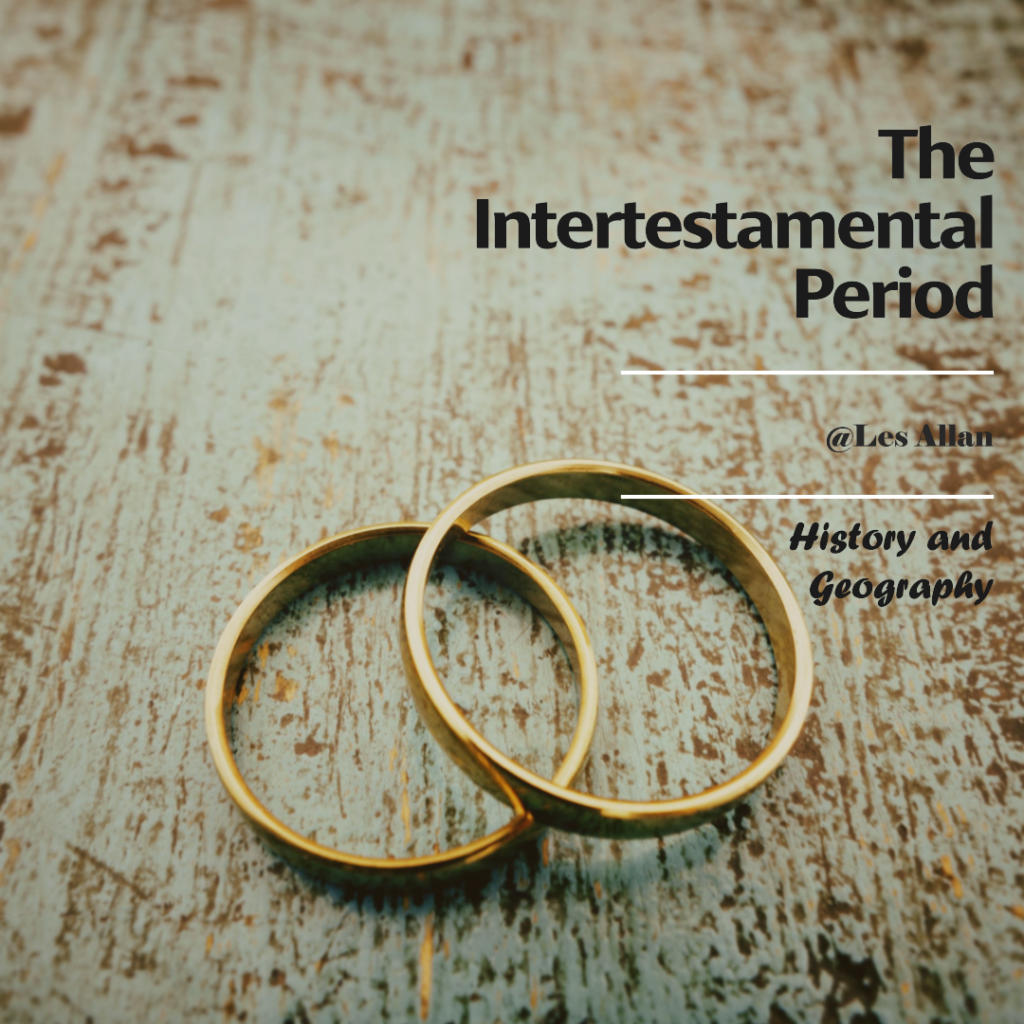Ohio Christian University
BIB3510 Gospels: Luke (ONLF23)
August 18, 2023

History and Geography: Intertestamental Period
The Intertestamental Period, also known as the Deuterocanonical Period, marks the gap between the events of protocanonical books and the books found in the Christian New Testament. It is vital to note the key points that summarize this period: Jewish Diaspora (Vanderkam, 2001, pp. 11, 14, 49, 50) and Hellenistic Judaism (Vanderkam, 2001, p. 15) were established during this time. The first synagogues were built, and there was a language shift from Biblical Hebrew to Aramaic and Hellenistic Greek (Vanderkam, 2001, pp. 13, 15, 17). The Maccabean Revolt, as documented in the Books of the Maccabees, occurred during this period, and the reign of the Hasmonean and Herodian dynasties, followed by Roman rule, happened during this time (Vanderkam, 2001, pp. 26-38). These events are crucial in providing the historical and literary context for the New Testament.
Key points have been addressed to address some prominent figures and groups during the Intertestamental Period. The Intertestamental Period has been traditionally thought to cover four centuries, spanning the ministry of Malachi to the emergence of John the Baptist in the early first century AD. Some notable groups during the Intertestamental Period include the Pharisees, the Sadducees, the Essenes, the Herodians, and the Zealots (Vanderkam, 2001, pp. 26-43). The Intertestamental Period was a time of no new prophets or revelations from God to the Jewish people. However, significant events occurred, including the Jewish diaspora, the first synagogues, a change in language, the Maccabean Revolt, and the production of the Greek Septuagint and Dead Sea Scrolls.
This period, the Intertestamental Period, profoundly and significantly impacted the events recorded in the Gospels. These developments include but are not limited to these three ways the Intertestamental Period would impact the events recorded in the Gospels.
In the era of Jesus, the Near East witnessed the spread of Hellenistic culture following Alexander the Great’s conquests and the subsequent division of his empire among his generals. This cultural shift profoundly impacted Jewish society and religion, which is evident from the use of Greek language and concepts in the New Testament.
The religious landscape of Palestine during this period saw a revival of Jewish identity and religious practice due to events such as the Maccabean Revolt and the Hasmonean dynasty’s reign. This renewed emphasis on faith is portrayed in the Gospels by depicting various religious groups, including the Pharisees and Sadducees.
It is worth noting that during the Intertestamental Period, Rome emerged as a major force in the Mediterranean region. In 63 BC, Israel was invaded by Roman general Pompey, which marked the start of Roman control over Palestine. This is significant in understanding the historical context of the events documented in the Gospels, as Jesus’ teachings occurred during the time of Roman occupation.
The Intertestamental Period was marked by some highly significant events, such as the Maccabean Revolt, which is well-documented in the Books of the Maccabees (Vanderkam, 2001). The establishment of the Hasmonean dynasty by Judas Maccabeus gave rise to the theologian groups of the Pharisees and Sadducees, who are often mentioned in the Gospel accounts. Additionally, Herod’s construction of the Jerusalem temple around 20 BC is noteworthy for its grandeur and size, making it one of the ancient marvels. As the New Testament begins, Herod the Great sits on the throne, marking the continuation of an era of outstanding achievements and accomplishments. These are just a few examples of how the events during the Intertestamental Period shaped the happenings described in the Gospels.
~Lesallan
References:
Vanderkam, J. C. (2001). An Introduction to Early Judaism. Wm. B. Eerdmans Publishing Co. https://platform.virdocs.com/r/s/0/doc/2024688/sp/254765931/mi/744068607?cfi=%2F4%2F6%2F2%2C%2F1%3A0%2C%2F1%3A0


